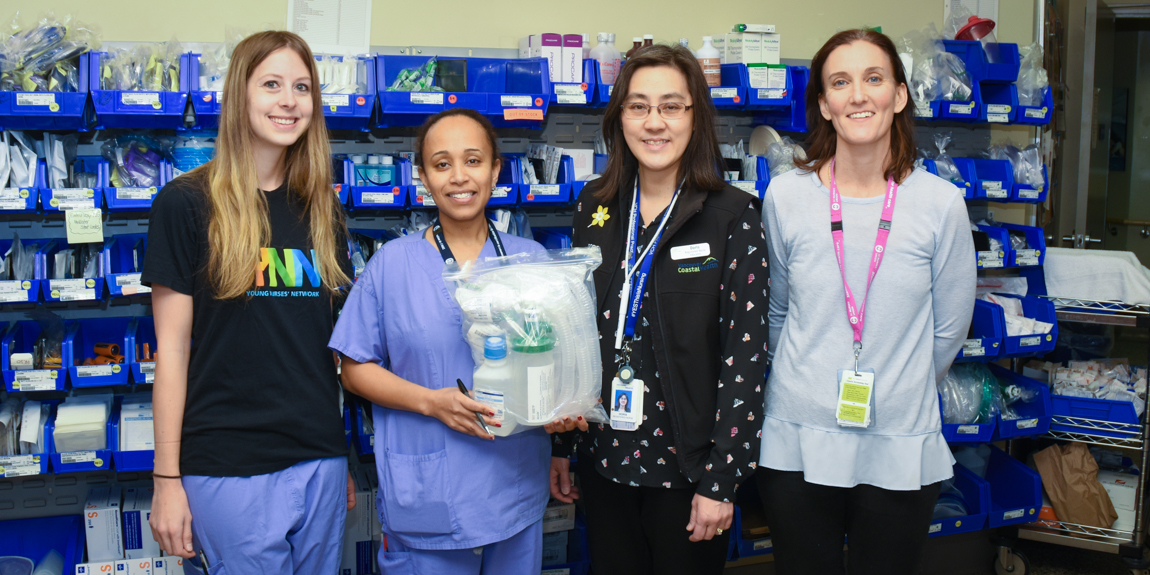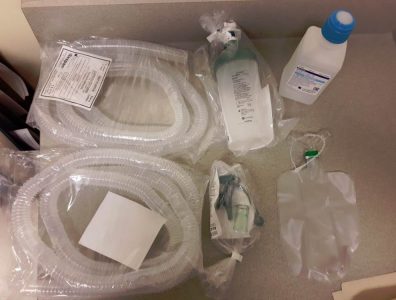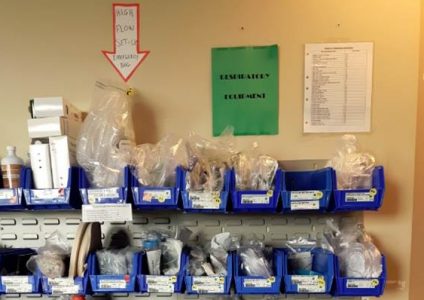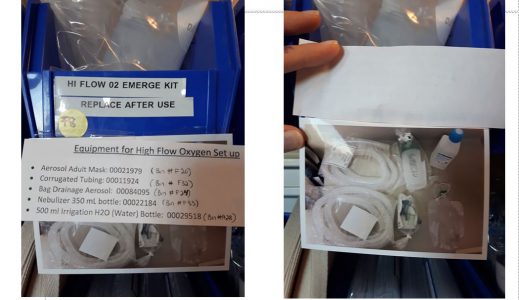How to make your work go 98% faster
You read that right—98 per cent faster. This small but mighty team from LB8AB (formerly CP8EF) at VGH was able to reduce the time required to access high flow equipment used to deliver oxygen to patients in urgent situations from an average of 189 seconds to an average of just 3 seconds—a 98 per cent reduction.
It might seem simple or obvious, but the way life-saving equipment and supplies are stored, labeled and located can become vitally important when every second counts. Using the Releasing Time to Care methodology, the team was able to redesign the retrieval system for this equipment making it safer and more efficient.
How they did it
Prior to this project, accessing the equipment required a nurse or non-nurse staff member to correctly remember, identify and locate six individual parts in the supply room. By pre-packaging all the high flow parts in one large zip-lock bag and clearly labeling it: High Flow Set Up Emergency Bag, accessing the equipment was made simple and fast. The team ran mock emergencies before and after to test the system and found that time to locate the equipment had gone from over 3 min. in some cases, to as low as 2.1 seconds.
- High flow equipment.
- Where to even start?!
- New single bag in bin.
- List with picture.
The team’s project was not without challenges but it had the advantage of a clear and simple goal, great consensus and buy-in from staff and physicians, and it only took two days to complete!
“Small but important changes like this are quite easy to implement and collectively they can make a big difference in efficiency and quality of care,” said Isabelle Bertrand, a registered nurse on the project team.
What can you do with 186 seconds?
In the roughly 3 minutes that have been saved, other interventions can be started or even completed including inserting an IV, starting medications, suctioning or simply comforting the family.
Better patient care
The new “high flow bag” has been used several times since implementation in September, 2017 and has reduced the time that a patient is hypoxic while waiting for high flow equipment, by about 3 min. The team has hypothesized that the negative effects oxygen deprivation on the brain, heart, liver and other organs are likely being minimized and chances of recovery from hypoxic emergencies will increase.
More information
Download the team’s slide presentation
Visit the Releasing Time to Care page on VCH Connect (internal link)
View the Releasing Time to Care evaluation report





